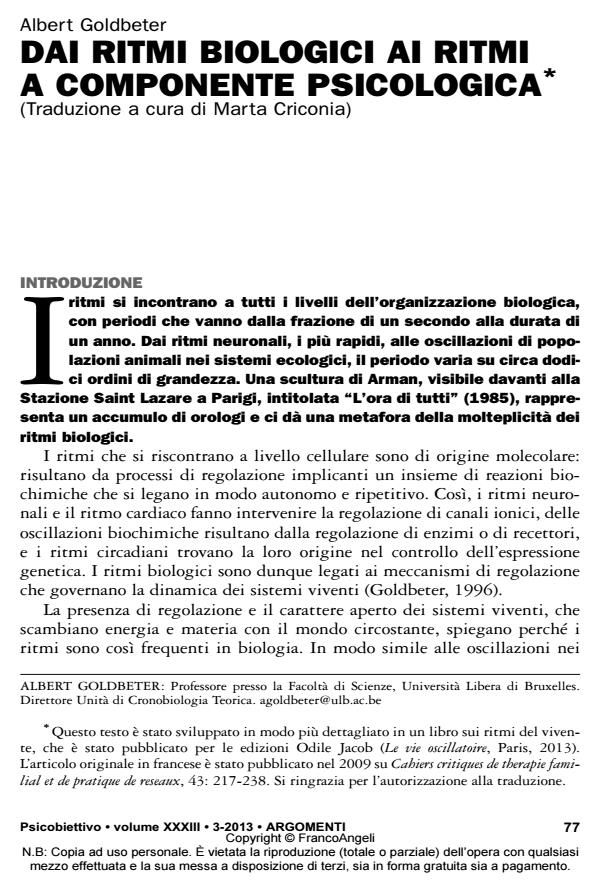From biological rhythms to rhythms with a psychological component
Journal title PSICOBIETTIVO
Author/s Albert Goldbeter
Publishing Year 2014 Issue 2013/3
Language Italian Pages 21 P. 77-97 File size 263 KB
DOI 10.3280/PSOB2013-003005
DOI is like a bar code for intellectual property: to have more infomation
click here
Below, you can see the article first page
If you want to buy this article in PDF format, you can do it, following the instructions to buy download credits

FrancoAngeli is member of Publishers International Linking Association, Inc (PILA), a not-for-profit association which run the CrossRef service enabling links to and from online scholarly content.
The many rhythms observed at all levels of biological organization for the most part rely on a molecular or cellular mechanism: In this article I examine the mechanism of periodic processes that possess a psychological component. Three examples are considered in turn. The first pertains to bipolar disorders characterized by an oscillation between a manic state and a depressive state. The second is that of weight cycling, in which dieting is accompanied by periodic bouts of weight loss and regain. The third example relates to the oscillatory dynamics resulting from the interactions between members of a family system. A modeling approach suggests that beyond the differences in mechanism, all these periodic processes, which contain a psychological component, share common properties with biological rhythms.
Keywords: Oscillations; Models; Biological Rhythms; Bipolar Disorders; Weight Cycling; Instability; Bifurcations.
Albert Goldbeter, Dai ritmi biologici ai ritmi a componente psicologica in "PSICOBIETTIVO" 3/2013, pp 77-97, DOI: 10.3280/PSOB2013-003005